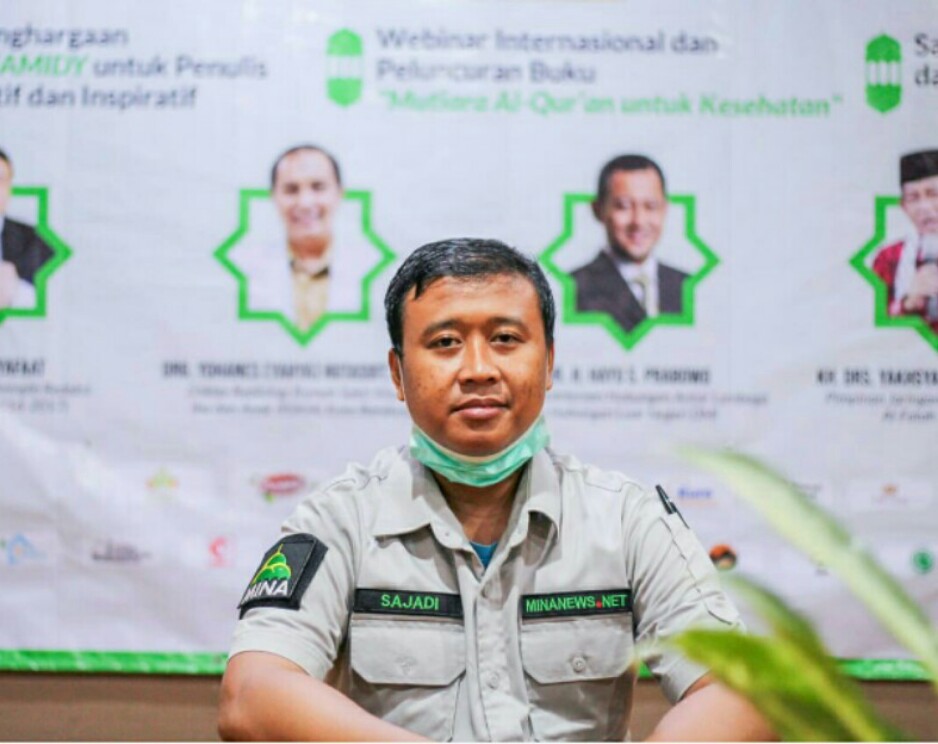Gaza, MINA – Hamam Al-Samra or Al-Samra Baths, is one of the remaining Ottoman architectural sites in the Gaza Strip.
This place has been around for hundreds of years, and is still operating today.
The Palestine Chronicle joins local craftsmen and workers, as they spend days repairing the place, in hopes of reopening the public bath in the near future.
The etymology of this name is not entirely certain. Some historians say, ‘Samra’ refers to the Samaritans, the ancient Gaza community who lived in the region until the end of the 16th century.
Also Read: Boycott of Zionism, The Most Powerful Weapon
The name Samra, some mention also refers to something dark or brown. So, the name can also mean a chocolate bath. This refers to the brown color of the walls made of stacked stones.
This bath consists of several rooms, each of which has a different temperature. There are hot, warm, and cold.
This distinctive place is managed by Haji Salim Abdullah al-Wazeer. The owner of the bath offers a historical narrative of when Hamam al-Samra was first founded.
“This bath is at least a thousand years old,” al-Wazeer said.
Also Read: Nuclear Technology: Harm and Benefit from the Qur’anic Perspective
Although the exact date cannot be verified, al-Wazeer said that there are wall carvings at the entrance of the baths, which mark most of the site as early as the Mamlouk era, specifically the year 685 in the Islamic Calendar. This means more than 750 years ago.
The bathhouse is divided into sections, starting with the underground fireplace, which is not visible.
“The fireplace is still wood-fired, as it is the safest fuel available in Gaza. The smoke is channeled through a 15-meter high chimney,” he said.
“The second part is the rest area. That’s where visitors can sit by the pool, covered by a checkered dome, which lets in the sun, and protects from rain from above.
Also Read: Gaza Cries Out, the World Stays Silent: A Wounded Humanity
The other part is where the steam reaches 55 degrees Celsius, he continued.
Health Benefits
“Our customers are of all ages and classes. Rich and poor, young and old, all interact here. There are also regular visitors who suffer from medical problems and joint problems,” he added.
Al-Wazeer explained about the health benefits of his historic baths, “This is the benefit of bathing here,” he said.
Also Read: Indo Defence Expo and Forum; Sharing Responsibility of Humankind and Environment
According to him, bathing in these places, especially the warm and hot water, can open the pores, stretch the joints and relax the body. Including can reduce tension, improve blood circulation and therefore strengthen the cognitive abilities of the brain.
“Bathing here can also be helpful for those with back problems and spinal problems. It helps rheumatic patients, activates parts of the body that are rarely moved and can control toxins and strengthen the immune system,” he added.
Al-Wazeer said the bath had undergone several renovations.
“At least four times. First started more than 750 years ago. Later, it was repaired in the 1970s, and I took part in the rebuilding of the bathhouse. It was also restored in 2001 through a United Nations Development Program (UNDP) grant, administered by the Islamic University of Gaza,” he continued.
Also Read: Safiya Saeed: From Somali Migrant to First Hijab-Wearing Mayor of Sheffield
According to him, the current repair follows the latest methods used in repairing ancient sites.
He revealed, the exotic Hamam al-Samra bath will reappear as beautiful as when it was first built a thousand years ago. (T/RE1)
Mi’raj News Agency (MINA)
Also Read: Why Food Safety is Essential During Hajj Services?



































 Mina Indonesia
Mina Indonesia Mina Arabic
Mina Arabic